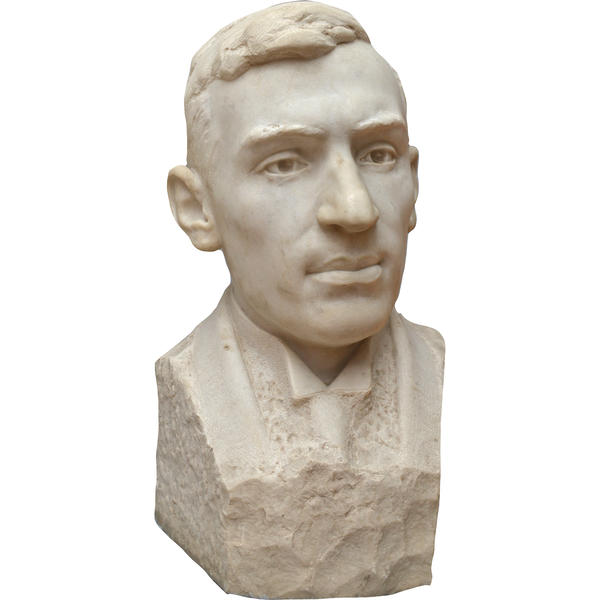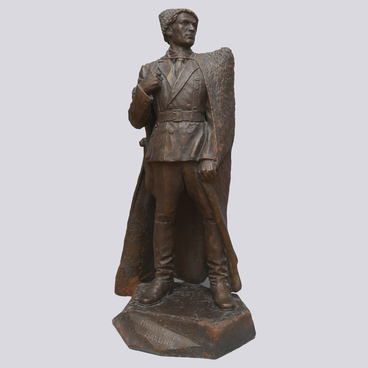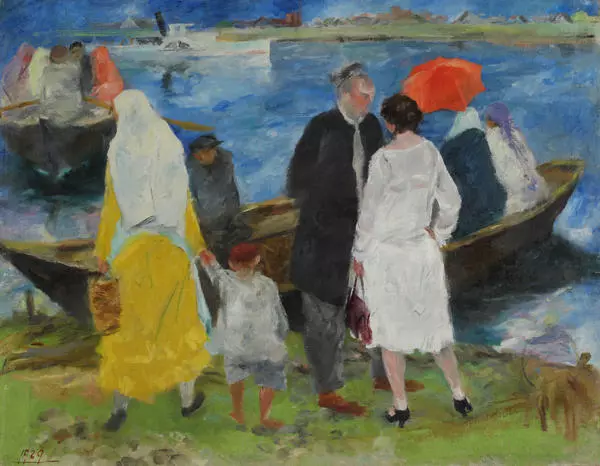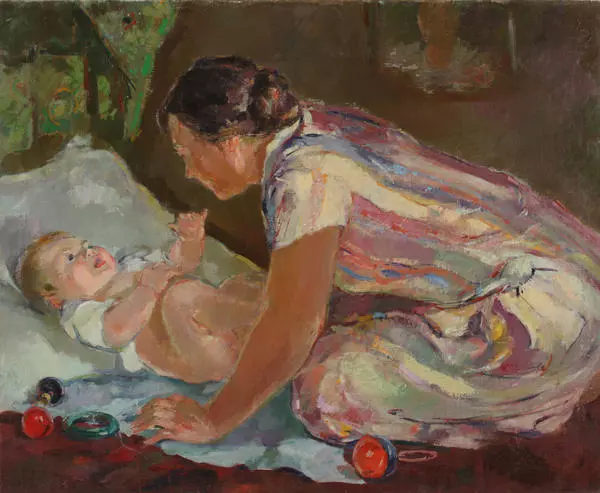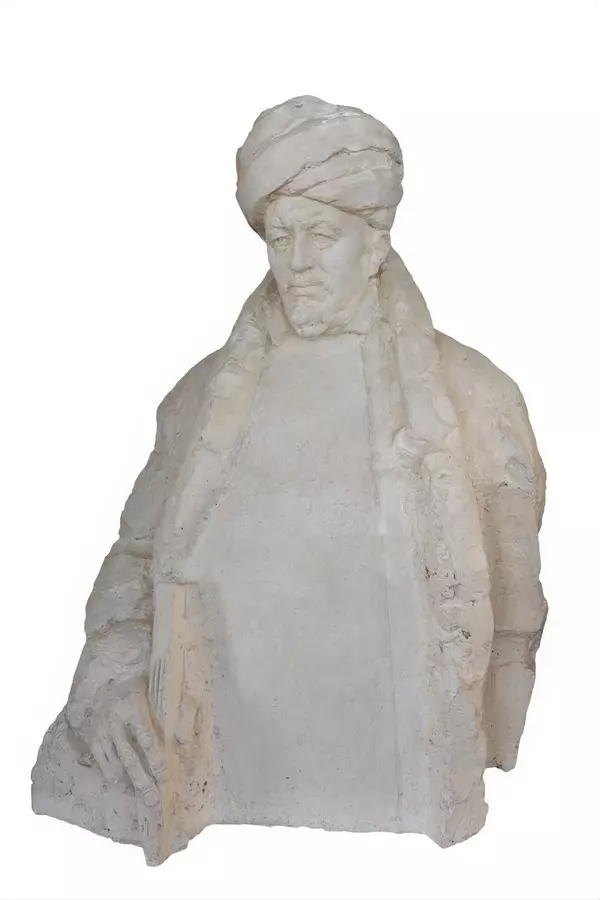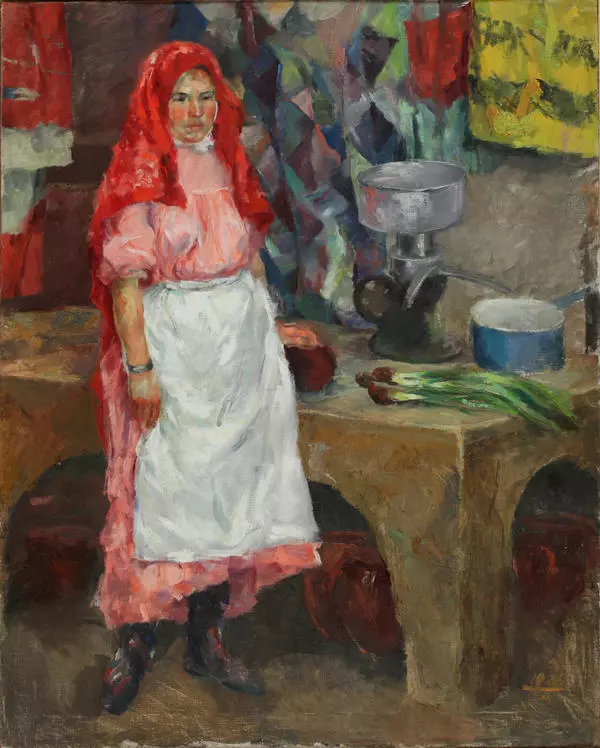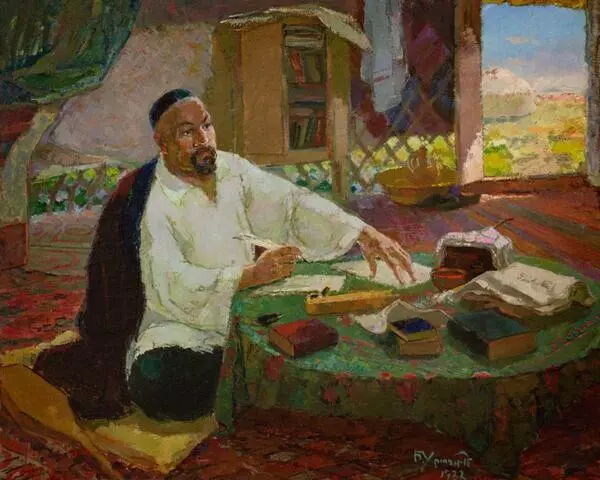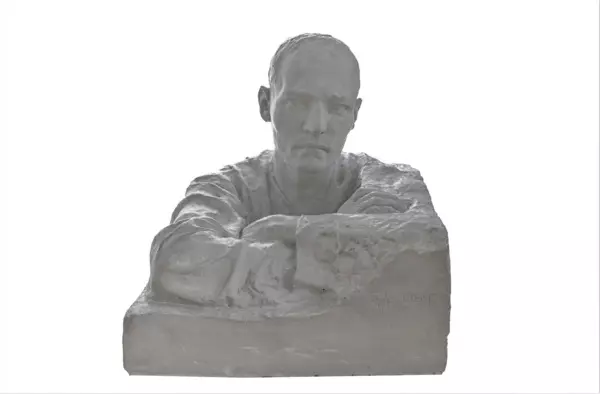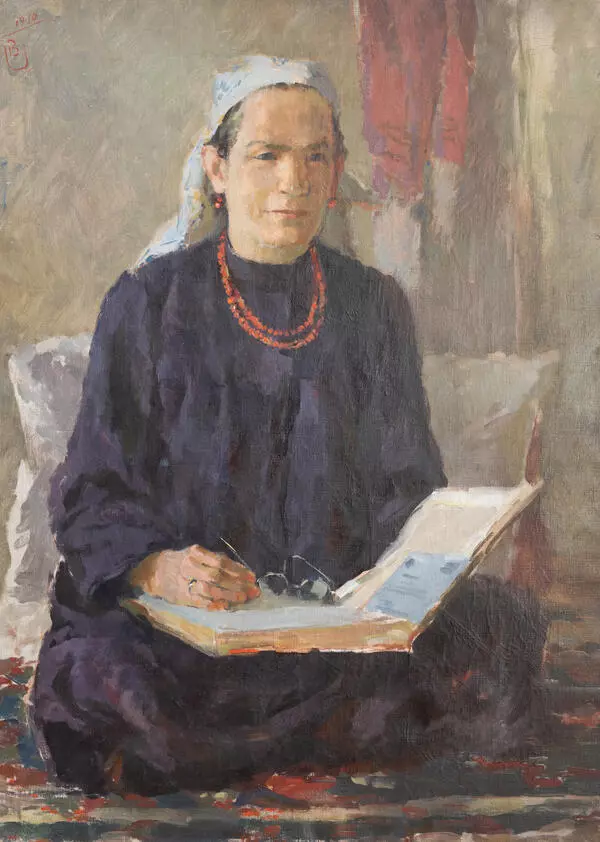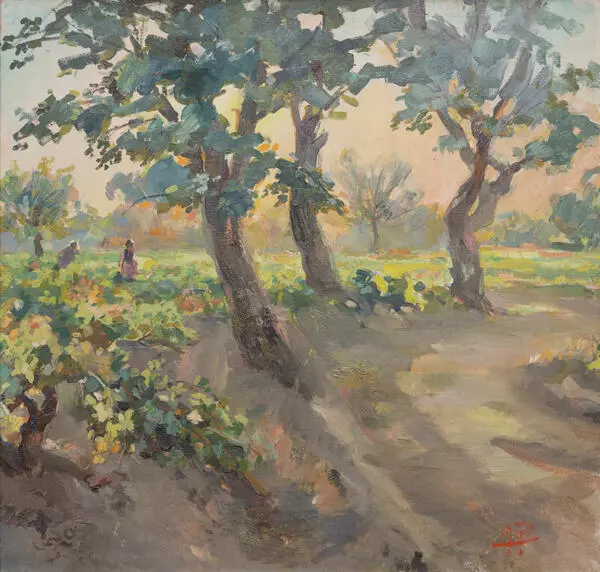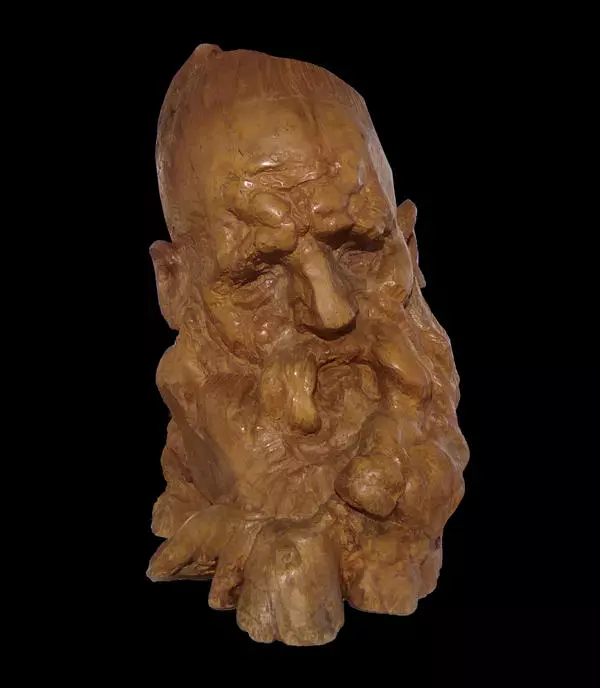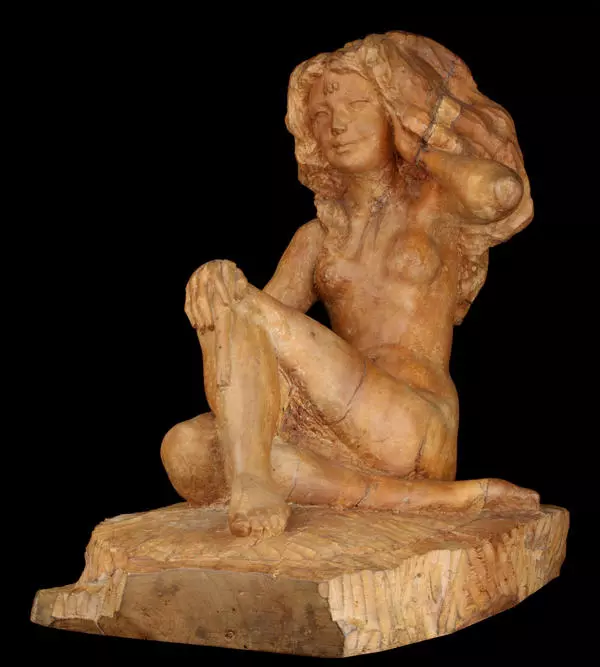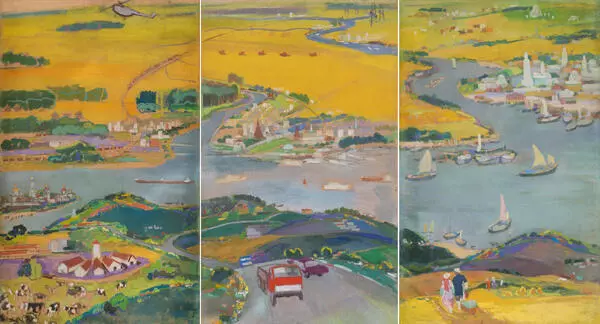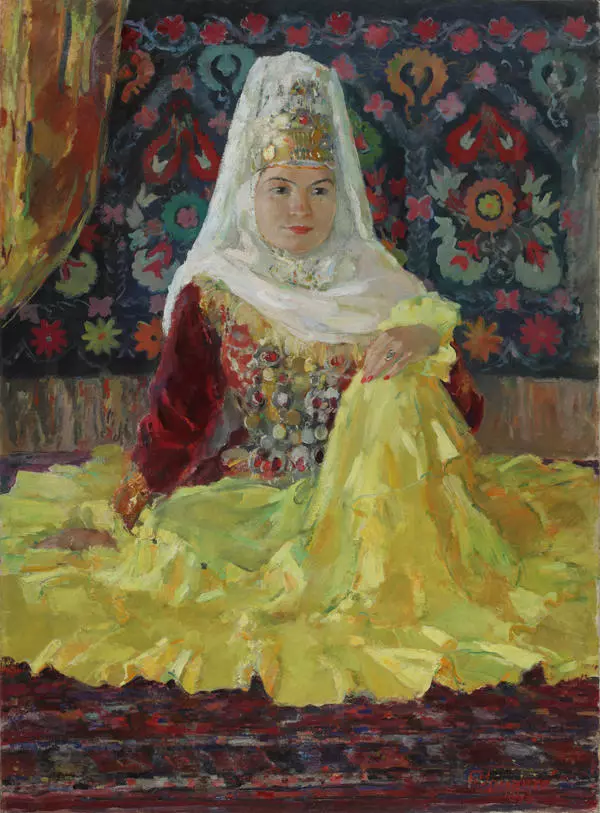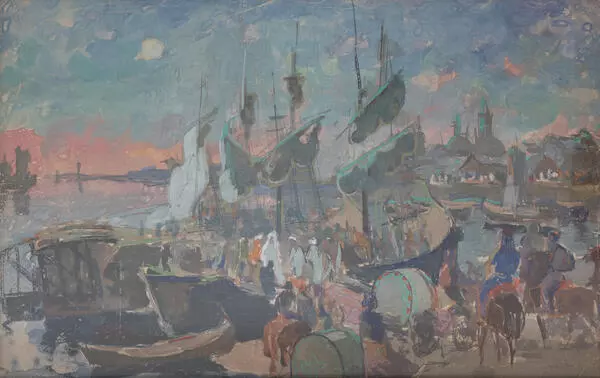Yakov Sheinkman was an active participant in the Russian revolutionary movement. He was born to a worker’s family in Tobolsk in 1890. At 20, he became a student of Petersburg University. It was there that he became close to the Bolsheviks and began to take part in students’ protests. Sheinkman was arrested and imprisoned in Kresty, a solitary cell prison in the Vyborg district of St. Petersburg. In 1912, he was released and left for Switzerland.
Bust of Y. S. Sheinkman
Creation period
late 1950’s
Dimensions
67x36x35 cm
67х36х35 cm
67х36х35 cm
Technique
marble, chiselling
Exhibition
5
Open in app#1
Baki Urmanche
Bust of Y. S. Sheinkman
#5
#6
Two years later, Sheinkman returned to Russia and went to Yekaterinburg, where he went on propagating Bolshevik ideas, and in autumn 1917, he moved to Kazan. Sheinkman became head of the Bolshevik faction in the Kazan Soviet of Workers’, Peasants’ and Soldiers’ Deputies, and soon, after the October Revolution, head of the Kazan Local Soviet and the Kazan Governorate Committee of the Bolshevik Party. He was in contact with Vladimir Lenin, contributed to the first Soviet Constitution
#7
In 1918, Sheinkman took part in suppressing the Socialist-Revolutionary Party (SR) mutiny and anti-Bolshevik uprisings. In the summer of 1918, Kazan was captured by the White Guards. Sheinkman was seized and executed.
#8
The marble bust of Sheinkman displayed by the Museum was sculpted by Baki Urmanche, a Soviet painter, graphic artist and sculptor, a Merited Artist of Russia and Tatarstan, and a winner of the Gabdulla Tukai State Prize.
#2
Before he became a professional artist, Urmanche had changed several jobs and professions: a factory worker, a miner, a school teacher, and a soldier. In 1926, he graduated from the departments of painting and sculpture at the Moscow Art and Engineering Institute. Immediately after the graduation, he left for Kazan and worked as an instructor at the Kazan Technical School for three years. In 1939, he was arrested on charges of nationalism and sent to a labour camp in the Solovetsky Islands for four years.
#4
After he was released, Urmanche lived and worked in Moscow. He was accepted as a member of the Moscow Branch of the Artists’ Union, his works were displayed at numerous exhibitions. In 1958, he accepted the Tatarstan government’s offer and came back to Kazan.
While at the start of his artistic career, Baki Urmanche was mostly a painter and graphic artist, in his mature years he dedicated most of his time to sculpture. He authored more than a hundred sculptural portraits of historic figures, including Soviet politicians and Tatarstan’s culture activists.
While at the start of his artistic career, Baki Urmanche was mostly a painter and graphic artist, in his mature years he dedicated most of his time to sculpture. He authored more than a hundred sculptural portraits of historic figures, including Soviet politicians and Tatarstan’s culture activists.
#9
National Museum of the Republic of Tatarstan
read morehide
00:00
00:00
1x
Bust of Y. S. Sheinkman
Creation period
late 1950’s
Dimensions
67x36x35 cm
67х36х35 cm
67х36х35 cm
Technique
marble, chiselling
Exhibition
5
Open in app
Share

